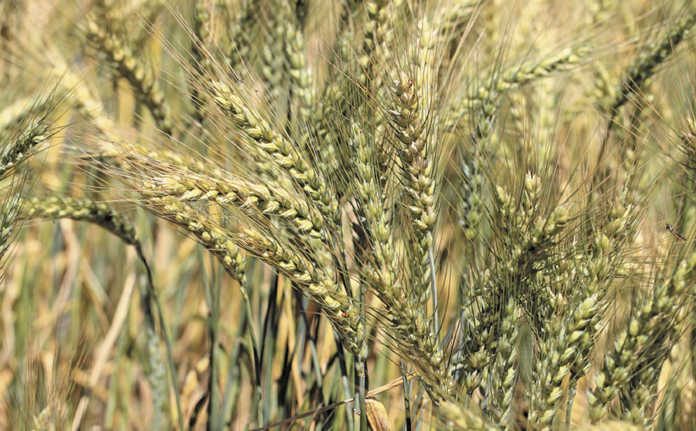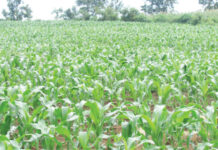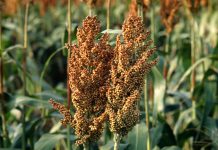Long-term conservation trials conducted on rotated grain crops in the Swartland and Southern Cape during the drought have produced promising results.
Dr Johann Strauss, agronomist at the Western Cape Department of Agriculture, spoke to Glenneis Kriel.
Anyone still doubting the feasibility of conservation agriculture would do well to look at a series of trials conducted in the Western Cape over the past production season.
This is according to Dr Johann Strauss, an agronomist at the Western Cape Department of Agriculture.
Strauss explains that applying conservation agriculture practices, such as crop rotation, minimum disturbance of the soil, and stubble retention, helped buffer the impact of the drought, because they improved soil health and structure, and in effect the soil’s water-holding capacity.
It was evident from the trials and from farms in the province that the retention of residue had a visible impact on the yield of several grain crops during last year’s dry season.
“There were cases of farmers in the drier areas of the Swartland who managed to produce up to 400kg/ha more wheat than their neighbours, simply because they had more plant material on the lands,” he says.
“The plant material is important because it keeps the soil cool, reduces evaporation and improves the soil’s water-holding capacity when it is converted to organic material in the soil.”
Plant material
In the trials at Langgewens near Malmesbury in the Swartland, wheat in a rotation where a legume cover-crop mix had been planted the previous year, performed the best of all the crops in that rotation, with an average yield of 3t/ ha.
Average wheat yield in the other rotations was about 2,4t/ha.
“An average wheat yield of 2,4t/ ha might not sound like much in comparison with the farm’s long-term average of 3,4t/ ha, but it’s pretty impressive considering we received less than half our annual rainfall, and yield averaged 2,1t/ ha during the drought of 2015 and only 500kg/ ha during the drought of 2003.
The results show we’re on the right track with conservation agriculture,” says Strauss.
The same pattern was observed at Tygerhoek Research Farm near Riviersonderend and at the trials near Riversdale in the Southern Cape.
According to Strauss, in 2017 Tygerhoek recorded its driest production season of the past 16 years, receiving only 147mm of rain between April and October.
Production, nevertheless, averaged 2,7t/ha for wheat, 3,1t/ha for barley, and 3,3t/ ha for oats, in comparison with the farm’s long-term average of 3,6t/ha for wheat, 3,5t/ha for barley, and 3,4t/ha for oats.
The Riversdale trial on the farm Uitkyk, belonging to Jan-Hendrik and Lindi Joubert, where climatic conditions were drier than at Riviersonderend, received its only significant rainfall (a mere 10mm) a month after the crops were planted.
Production averaged 1,4t/ha for wheat, 1,35t/ha for barley, and 1,1t/ha for canola, in comparison with the long-term average of 3,4t/ha for wheat, 3t/ha for barley, and 1,6 t/ha for canola.
Strauss found that no harm was caused if livestock grazed the stubble, provided the animals were managed carefully to prevent overgrazing.
“We aimed to retain at least 50% of the plant material in the trials where animals grazed the land.
The international consensus is that to be classified as conservation agriculture, at least 30% of the plant material should be retained.”
He emphasises that a farmer should not be a slave to rotation; rather, rotation should work for the farm.
“You should be able to adapt a rotation as needed.
If there are weed problems in a camp where wheat is due to be planted, it might be better to plant oats for making hay to get the weeds under control.
If there are no weed problems, you might plant wheat for two or even three seasons in a row.
Just remember that production will decline each year that you plant the same crop.”
He adds that at least three crops should be included in the rotation, but for the sake of diversity more can be planted.
Fertilisation
Last year’s findings suggest there is room to improve nitrogen fertilisation efficiency on farms.
“We’ve been reducing the volume of nitrogen used in the trials at Langgewens for quite some time now,” he explains.
“For the past two years, we applied only 60kg/ha compared with more than 80kg/ha in the past. Of the 60kg, about 23kg were applied during planting.”
A new trial was started two seasons ago to investigate low-input conservation agriculture, and last season nitrogen was applied at a rate of only 12kg/ ha during wheat planting.
Another 20kg/ha were then applied as a top dressing if a legume (a plant type that fixes atmospheric nitrogen) or legume cover crop had been planted the season before the wheat.
So in this rotation, wheat received 32kg/ ha of nitrogen in total during the production cycle.
In rotations where any crop except legumes had been planted the previous season, the wheat received a nitrogen top dressing at a rate of 40kg/ ha.
Wheat in these rotations therefore ended up receiving nitrogen at 52kg/ha.
The results were promising, according to Strauss.
Wheat planted after faba beans and vetch performed the best, while wheat following linseed performed the best in the sequences where wheat followed a non-legume crop.
Wheat yield in both these sequences averaged 2,6t/ ha, which was 200kg/ha more than the seasonal average for this crop.
Low level of nitrogen
In a separate trial, nitrogen was applied to wheat in a medic-wheat rotation at a rate of only 12kg/ha; this was to test the effect of low nitrogen input on systems that had been in place for 22 years.
Half of the camp received a top dressing of 20kg a month after planting, while the rest received no additional nitrogen.
The trial was carried out on both good and marginal soil.
Wheat planted in the good soil that received no nitrogen produced 40kg/ha more than wheat given no nitrogen top-ups.
The same was seen on the marginal soils, where wheat that did not receive additional nitrogen after planting yielded 150kg/ha more than wheat that received no nitrogen top-ups.
Farmers should not make any hasty decisions based on these results, Strauss cautions.
“I think we can get away with using less nitrogen over time in conservation agriculture systems,” he says.
Strauss is hesitant to give production advice for the coming season, as it is difficult to know what the weather will do.
“The best advice I have for farmers is to keep track of weather patterns and base their decisions on that.
Choose cultivars carefully if there’s uncertainty or any indications that we might be heading for another dry year.
“Look for two cultivars of each crop that can take some heat and water stress, and which performed well in trials in your production region.”
The main aim during the coming season will be to get plant material back on the land.
“Restoring soil health and structure with the help of conservation farming can’t be achieved overnight.
We’ve been doing conservation farming at Tygerhoek for the past 17 years and at Langgewens for 23 years.”
Email Dr Johann Strauss at JohannSt@elsenburg.com, or phone him on 021 808 5479.





